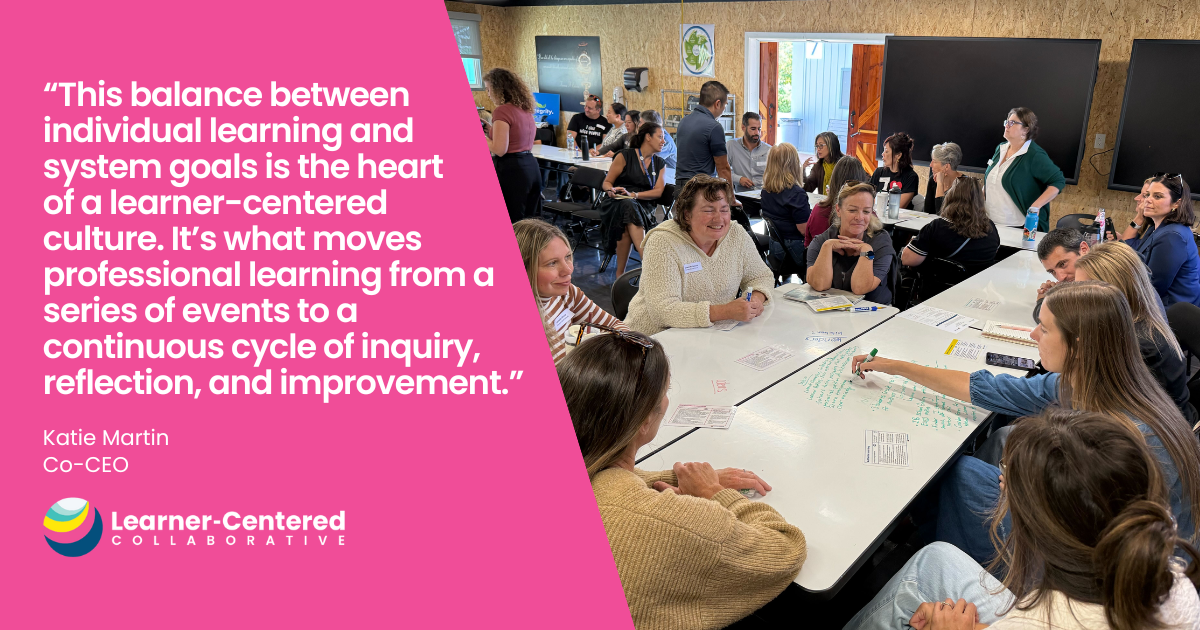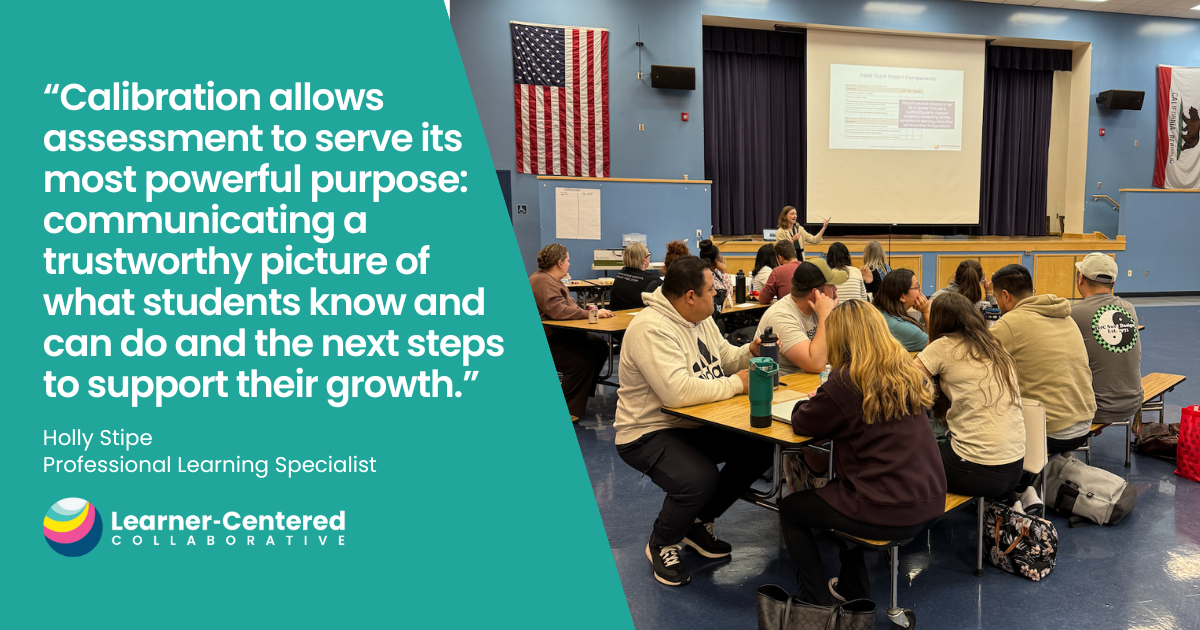5 Ways to Foster Learner-Centered Innovation Through Professional Learning Cycles
Learning at any age requires clarity of objectives or goals, continued practice, feedback cycles, and plans for iteration and growth. This is why professional learning is best done through learning cycles instead of being a one-and-done event. These learning cycles promote a culture of sharing and innovation and oftentimes are best done in Communities of Practice or Professional Learning Community (PLCs) .
At Coyote Springs Elementary School in Prescott Valley, AZ, Professional Learning Community members that meet regularly throughout the year build learner-centered teaching practices in the same way they encourage their students to learn: capturing and reflecting on evidence of their learning as they work towards clear objectives over time. A similar process happens at the Meridian School in Seattle, WA. There, educators regularly self-reflect, meet with mentors and grade-level teams and iterate on their practice based on feedback. Below are 5 ways to foster learner-centered innovation through professional learning cycles and how Coyote Springs and Meridian are making this work in their contexts.
1. Make desired outcomes transparent to guide purposeful goal-setting.
In a learner-centered environment, clear outcomes are the North Star that guides the design and purpose of learning experiences for students of all ages.
At Coyote Springs, the administration is clear with teachers about the priorities of the school. Their “Plate” outlines the school’s vision for teaching and learning: to “provide a world-class education for all students by moving beyond the basics and embracing the 5 C Skills for the 21st Century.” Each level in the Plate corresponds to a level in the Marzano High Reliability School framework. CSES has achieved “Level 1” status and is actively working towards a Level 2 certification. In their PLCs, educators set goals based directly on the Marzano Effective Elements of Instruction.
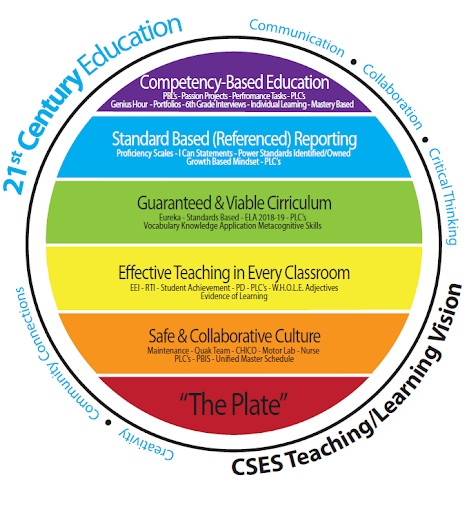
At Meridian, Associate Head of School, Elizabeth Hodgson, works with educators on their goals using the Danielson Framework of educator skills. Educators use the Clusters and skills to reflect and then set a goal for the year. 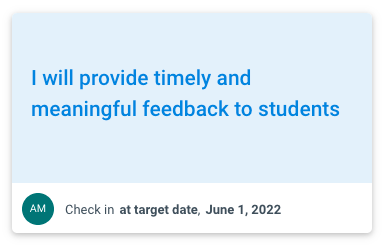
Dive into the characteristics of effective PLCs and access tools for planning, running, and documenting progress in PLCs. Download free professional learning tool
2. Create opportunities for educators to use the same technology tools students use.
Many schools and districts use Learning Management Systems to help support and scale learner-centered practices ranging from personalization to competency-based assessment. Encouraging educators to use that same tool in “student mode” in the context of professional learning can help teams get comfortable with instructional technology tools, gain insight into their learners’ experience, and more efficiently identify ways to modify current approaches to technology use. In this op-ed for District Administration, instructional technology specialists Dustin Andrus and Rick Bray share even more benefits of using the same technology tools for students and educators.
At Coyote Springs and Meridian, teachers and students alike leverage the Altitude Learning technology platform to manage the learning process and monitor progress towards goals. Specifically designed to make learning visible, enable competency-based assessment, and empower learners to own and manage their own learning, the platform gives learners of all ages the digital ecosystem they need to learn according to their needs.
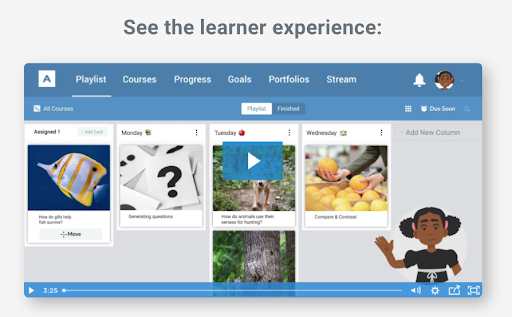
3. Make prototyping and practical application the norm!
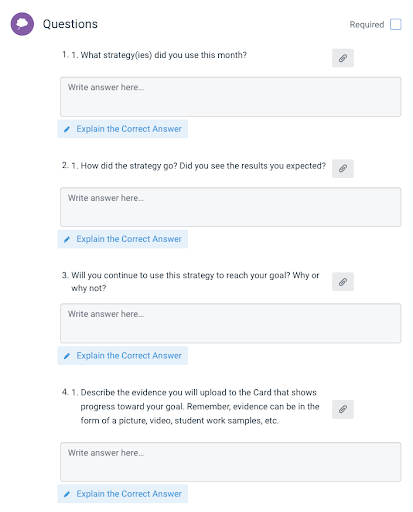
Studies show that effective professional learning for educators emphasizes active learning practices and creates opportunities to apply learning to real-life practice (Stewart, Journal of Adult Education, p. 28-30). At Coyote Springs, Professional Learning Communities help to foster a strong culture of learner-centered innovation by providing educators with the time, space, and inspiration to prototype learner-centered practices in their classrooms. Instructional Specialist Pamela Clark poses the series of prompts pictured here to educators to support them in implementing new pedagogical strategies directly in their classrooms. As teachers prototype new practices, they capture evidence of their learning and use the Portfolio feature in the Altitude Learning platform to curate work that showcases their professional growth over time.
4. Incorporate reflection and peer feedback
As instructional coach Aaron Marvel notes in this Edutopia article, goal-directed self-reflection is just as important for adults as it is for young learners. Creating opportunities for self-reflection and peer feedback builds a culture in which learners of all ages are empowered to drive their own growth over time. For example, after classroom visits at Meridian, teachers add self-reflections to their goals. Then, Elizabeth adds reflections of her own to monitor progress and provide feedback to teachers. These reflection exercises ensure that educators are always learning, iterating, and innovating to best serve their learners’ needs and goals.

5. Keep learning personalized!
Central to learner-centered education is personalized learning – or, learning that is co-constructed based on each learner’s unique strengths, skills, interests, and needs. To further support learner-centered innovation, a next step for the administrative team at Coyote Springs and Meridian is to create personalized professional learning plans for educators. Their goal is to allow each teacher to have a personalized professional growth plan and store resources, strategies, reflections and feedback in the Altitude Learning Platform.
Ensuring that learning experiences are personalized will not only help empower educators to drive and capture evidence of their own learning but will also give them a firsthand understanding of how they can best design personalized, purposeful learning experiences for their students.
Download 8 questions to consider when designing personalized, student-centered learning experiences.
How will you leverage professional learning cycles to reinforce a culture of learner-centered innovation in your school or district? Let’s connect to discuss your ideas! Reach us at collaborate@learnercentered.org.


